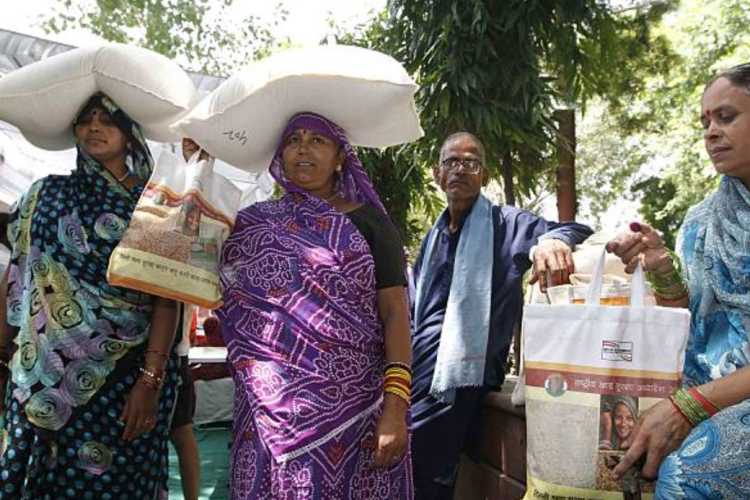
India’s approach to food security has long been centred on caloric sufficiency, ensuring that its vast population does not go hungry. Yet, as highlighted in the Economic Survey 2024-25, the focus on food availability alone has masked a deeper crisis—nutritional insecurity. Despite achieving self-sufficiency in grain production, the country continues to grapple with widespread malnutrition, rising obesity rates, and deteriorating public health. These issues pose a direct threat to long-term economic growth.
The Global Hunger Index 2024 ranks India 105th out of 127 countries, classifying its hunger levels as serious—a paradox for a nation that produces surplus grains. This disconnect between food production and actual nutrition represents an economic, social, and policy failure that demands urgent attention.
READ | Unpaid work biggest stumbling block to gender equality
Limits of calorie-centric food security
For decades, India’s public distribution system (PDS) and food security policies have prioritised staple grains such as rice and wheat to prevent starvation. However, calories alone do not equate to good health. According to the World Food Programme, over 21% of India’s population lives on less than $1.90 per day, making access to nutrient-dense foods nearly impossible. This has led to a dual crisis—malnutrition among the poor and a surge in non-communicable diseases (NCDs) among urban populations, fuelled by the unchecked rise of ultra-processed foods (UPFs).
The Economic Survey explicitly warns against the health risks of UPFs, noting that India’s dietary patterns are shifting towards high-calorie but nutrient-deficient foods. This transition exacerbates health risks, reduces workforce productivity, and weakens economic momentum. A country burdened with diabetes, cardiovascular diseases, and cognitive decline cannot sustain long-term growth, let alone claim the status of an emerging superpower.
The government’s push for millets, pulses, and superfoods like makhana is commendable but remains inadequate without structural reforms in food policy and distribution. India’s agricultural subsidies and procurement mechanisms remain heavily skewed towards rice and wheat, leaving more nutrient-rich crops underfunded and underutilised.
While millets have been declared a nutritious alternative, their integration into public feeding programmes, midday meals, and PDS distribution remains limited. Without direct policy interventions to mainstream these foods, the millet initiative risks being a symbolic gesture rather than a systemic solution.
Unchecked rise of ultra-processed foods
India has also failed to curb the growing dominance of ultra-processed foods, which are aggressively marketed across socio-economic classes. The Economic Survey acknowledges the health risks posed by poor dietary choices, but recognising the problem is not enough—concrete policy action is required.
Simply promoting traditional superfoods will not work if junk food continues to flood the market unchecked. While the government regulates tobacco, alcohol, and even sugar-sweetened beverages, UPFs remain largely untaxed, unregulated, and deceptively marketed, making them the default dietary choice for many.
Structural gaps in food infrastructure
Despite producing surplus food, India’s supply chain inefficiencies result in enormous food wastage and poor nutritional availability. The Food and Agriculture Organisation (FAO) estimates that nearly 40% of India’s agricultural produce is lost due to poor storage, preservation, and transportation. This represents a direct loss of valuable nutrition that could have fed millions.
Instead of solely focusing on increasing food production, investments must be redirected towards strengthening cold storage facilities, improving logistics, and adopting food processing innovations that preserve nutrient content from farm to table. Without addressing these gaps, nutritious foods will remain unaffordable, inaccessible, or lost to inefficiencies.
India’s food security strategy must also account for climate change, which is already disrupting agricultural yields and food quality. Rising temperatures, erratic monsoons, and soil degradation not only reduce crop productivity but also lower the nutritional value of food.
Research indicates that higher carbon dioxide levels decrease the protein and micronutrient content of staple crops. This means that even abundant food supplies may lack essential nutrition. To counter these challenges, India must urgently integrate climate-resilient agricultural practices, promote crop diversification, and invest in drought-resistant, nutrient-rich crop varieties to safeguard food security in the coming decades.
Strengthening food regulations
India’s food regulatory system remains reactive rather than preventive, failing to keep pace with rapidly evolving dietary consumption trends. The unchecked rise of quick commerce and food delivery platforms has further entrenched convenience-driven, ultra-processed food consumption, worsening the public health crisis. While fresh, nutrient-dense food remains expensive and inaccessible for many, junk food is aggressively marketed, widely available, and often cheaper than healthier alternatives.
To counter this trend, India must implement stringent front-of-pack labelling norms to ensure that consumers are well-informed about unhealthy ingredients. Additionally, taxation on ultra-processed foods, similar to measures taken against tobacco and sugar-sweetened beverages, can serve as a deterrent against excessive consumption.
Strict penalties should also be enforced against misleading health claims that deceive consumers into choosing unhealthy options. Countries like Brazil, Chile, and the UK have successfully implemented these measures, leading to tangible improvements in public health outcomes. India must adopt similar strategies to prevent a future where ultra-processed foods dominate dietary habits across urban and rural populations.
Public-private partnerships
The government alone cannot bridge the nutrition gap. Private sector involvement in fortified foods, sustainable farming practices, and consumer education campaigns can accelerate progress. Public-private partnerships (PPPs) in food innovation, alternative protein sources, and supply chain management should be actively encouraged.
Additionally, corporate policies must integrate nutrition into workplace health programmes, offering subsidised healthy meals and wellness initiatives to combat the growing prevalence of nutrition-related illnesses in the workforce. By collaborating with the private sector, India can drive innovation in food production, enhance supply chain efficiencies, and promote healthier food choices at scale.
Changing consumer behaviour
Consumer behaviour plays a crucial role in shaping dietary trends. Traditional Indian diets were inherently nutritious, yet rapid urbanisation, changing lifestyles, and Westernised marketing tactics have driven the increased consumption of processed and convenience foods. Public policy must focus on reviving indigenous food habits by integrating nutrition education into school curriculums, encouraging healthy eating through media campaigns, and promoting healthier food choices across communities.
A nationwide nutrition literacy campaign, similar to past initiatives on sanitation and digital payments, could help shift consumption patterns at scale. By reshaping consumer preferences and making nutritious foods more desirable and accessible, India can lay the foundation for a healthier future.
Nourishing India’s Future: A Call for Policy Transformation
A nutritionally deficient population leads to lower cognitive abilities, reduced workplace efficiency, rising healthcare costs, and an overall decline in national productivity. A demographic dividend is only an asset if the population is physically and mentally fit to drive economic growth.
India’s food security policies must evolve from merely feeding people to nourishing them. This requires redesigning agricultural incentives to promote nutrient-rich crops, integrating diverse foods into public distribution systems, strengthening food safety regulations to curb the rise of ultra-processed foods, and investing in consumer education and awareness.
No major economy has sustained long-term growth while allowing its population to suffer from preventable nutrition-related illnesses. If India truly aspires to be an economic powerhouse, it must act decisively to secure both its economic and human capital for the future. The time for incremental policy tweaks is over—India’s food security strategy must undergo a paradigm shift, one that prioritises not just feeding its people, but nourishing them.
Srinath Sridharan is a strategic counsel with 25 years experience with leading corporates across diverse sectors including automobiles, e-commerce, advertising and financial services. He understands and ideates on intersection of finance, digital, contextual-finance, consumer, mobility, Urban transformation, and ESG. Actively engaged across growth policy conversations and public policy issues.

